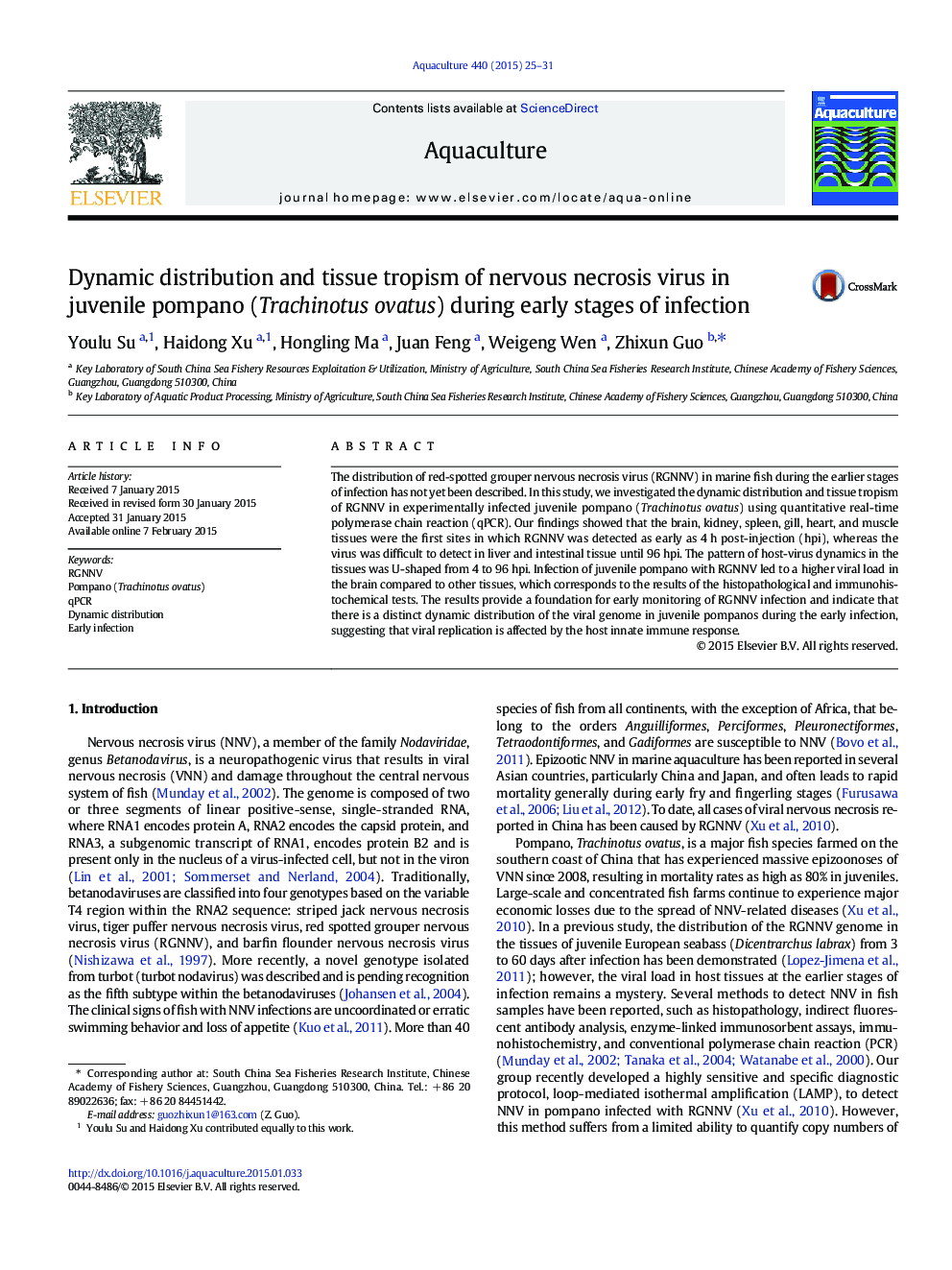| Article ID | Journal | Published Year | Pages | File Type |
|---|---|---|---|---|
| 2421626 | Aquaculture | 2015 | 7 Pages |
•It's the first time to report the distribution of RGNNV in marine fish during early infection.•The pattern of host–virus dynamics in the host is U-shaped during early infection.•Viral replication is affected by the host innate immune response.•The results provide a foundation for early monitoring of RGNNV infection.
The distribution of red-spotted grouper nervous necrosis virus (RGNNV) in marine fish during the earlier stages of infection has not yet been described. In this study, we investigated the dynamic distribution and tissue tropism of RGNNV in experimentally infected juvenile pompano (Trachinotus ovatus) using quantitative real-time polymerase chain reaction (qPCR). Our findings showed that the brain, kidney, spleen, gill, heart, and muscle tissues were the first sites in which RGNNV was detected as early as 4 h post-injection (hpi), whereas the virus was difficult to detect in liver and intestinal tissue until 96 hpi. The pattern of host-virus dynamics in the tissues was U-shaped from 4 to 96 hpi. Infection of juvenile pompano with RGNNV led to a higher viral load in the brain compared to other tissues, which corresponds to the results of the histopathological and immunohistochemical tests. The results provide a foundation for early monitoring of RGNNV infection and indicate that there is a distinct dynamic distribution of the viral genome in juvenile pompanos during the early infection, suggesting that viral replication is affected by the host innate immune response.
